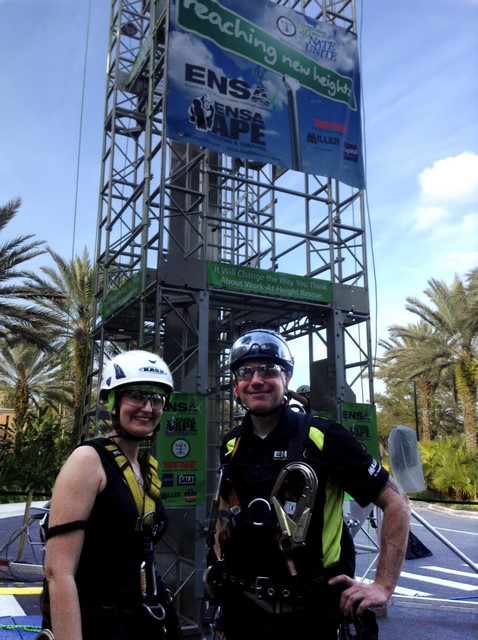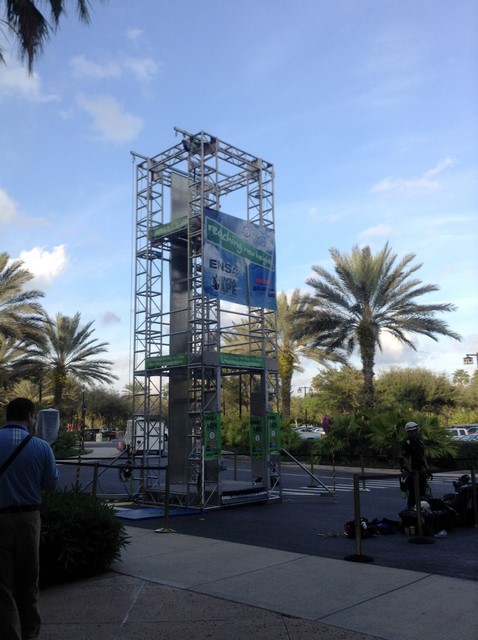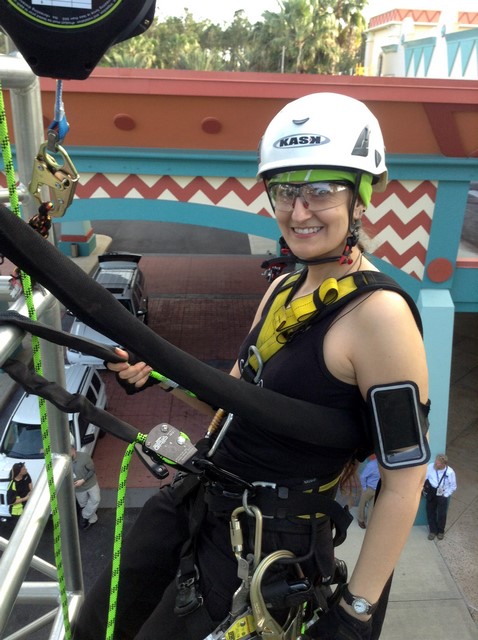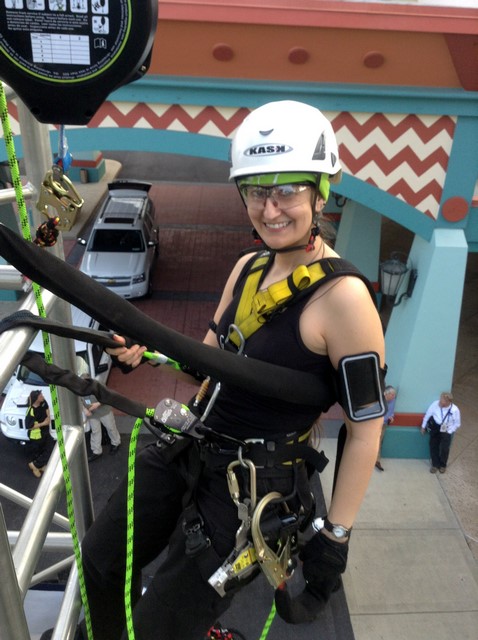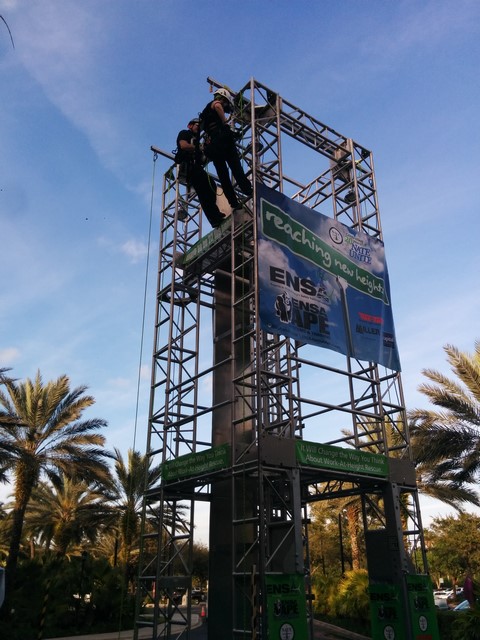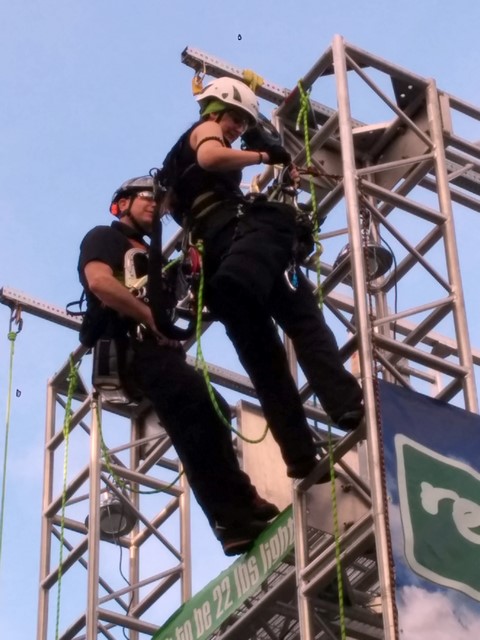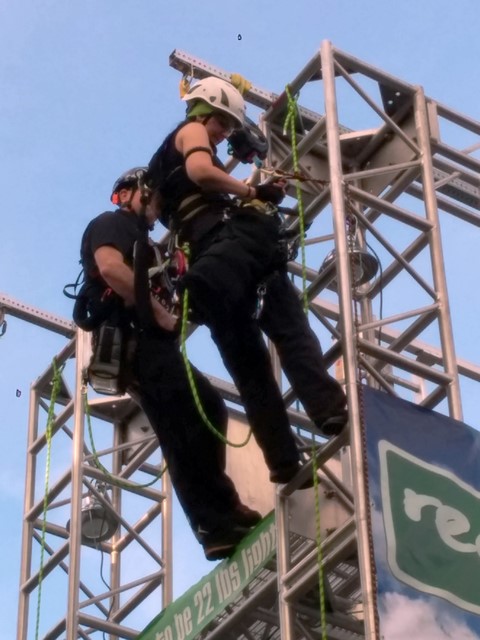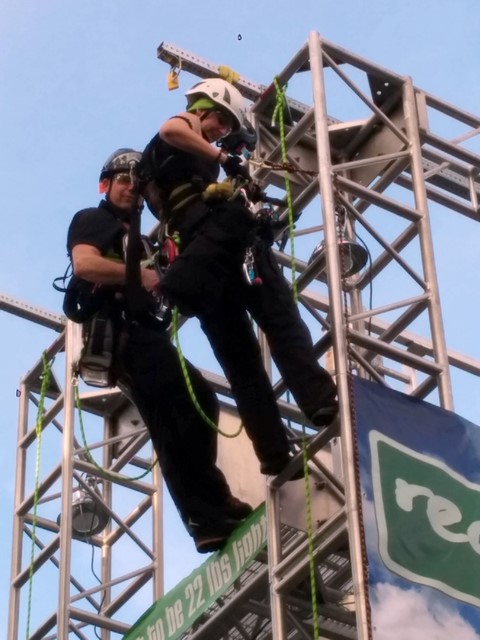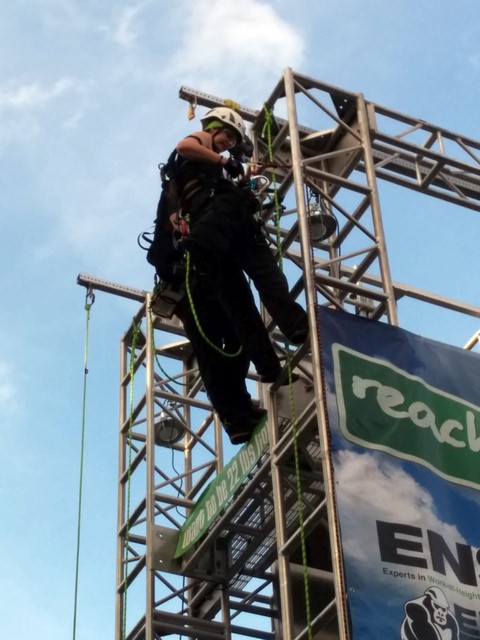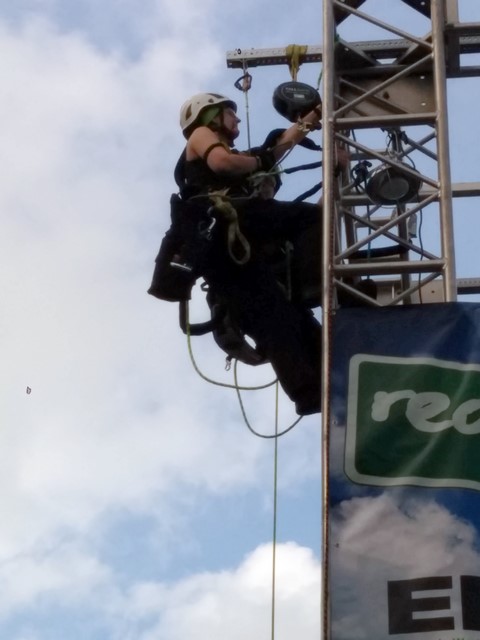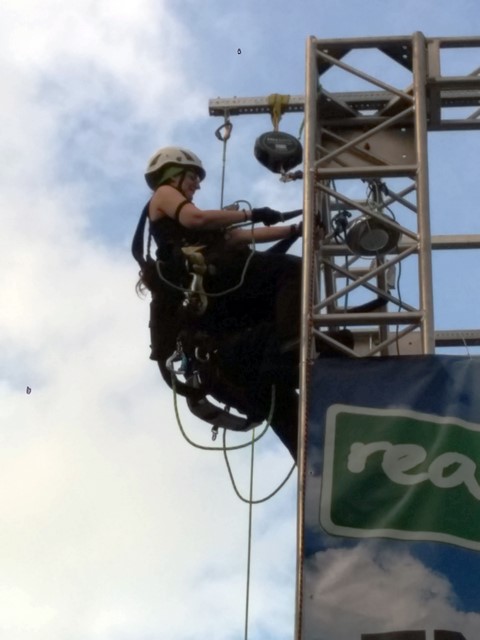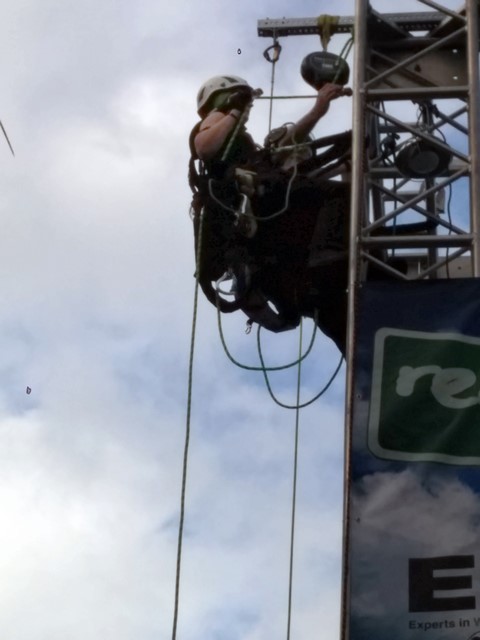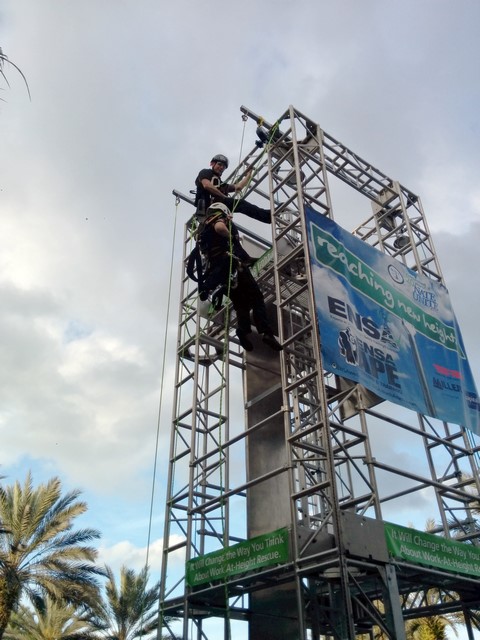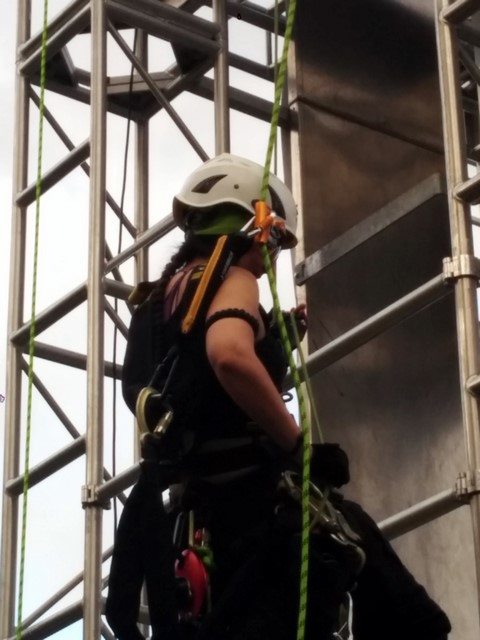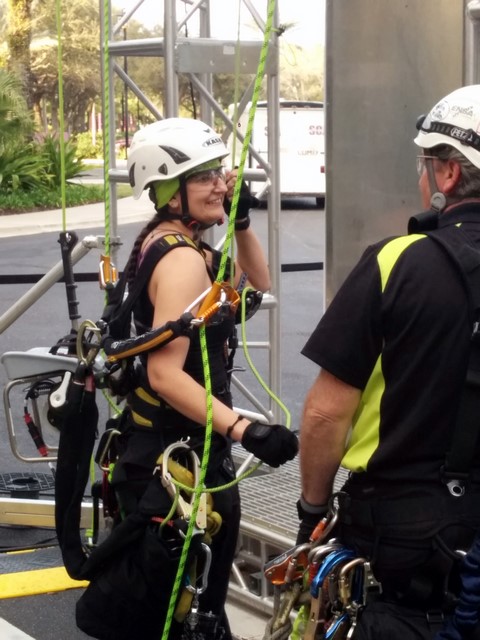 |
 |
 |
 |

Follow The InnKeeper on:
NATE Pictures
February 25, 2015
I work in entertainment. My primary skill is camera and graphics for live events and studio shows, but I got my start in lighting, which led to rigging. I love heights and I love climbing, so even though I don't rig very often (and most of my climbing is as a lighting tech these days), and as I age I can't do it as often or as hardcore as I used to, it's still one of my favorite things to do at work.
Entertainment rigging uses harnesses, but not like the kind of harnesses and safety equipment used by tower climbers. We have a harness that has fall-arrest lanyards - one or two straps that attach to our harness and then attach to a fall-arrest system which is basically a safety line bolted to the ceiling of a ballroom or arena. These straps don't hold any of our weight during normal use, they're just there to catch us if we fall off a beam or out of a lift basket. Then we walk out onto the steel beams, basically free-hand with only this safety line to catch us. I wear this harness and fall-arrest system when I walk a beam, and when I operate a boom lift (high reach lift), but that's it. If I climb a truss structure, I usually don't have a harness on at all.
After I got off work for the NATE - National Association of Tower Erectors - Convention, I had the opportunity to try out some safety products that were being demonstrated by the company that created them, called ENSA Experts In Work-at-Height Safety Training / Equipment. They showed me 2 products - one was a "work positioning" line that basically acts as a third arm. It allows you to climb up a truss or whatever, then hook this line up to whatever you're climbing, and then you can lean back and let go and it will hold you to the truss using a device that locks the rope from slipping but still allows you to adjust the length of the rope at will. It's called a Petzl Grillon Adjustable Work Positioning Lanyard, for those interested in looking it up, & video of how it works.
Normally, when I climb a truss, I have to use a leg hook maneuver that is used by acrobats and gymnasts to hook my knee around a truss support, and that's how I hold on. Then, holding on in this manner, I have to somehow use both hands and my tools to attach or remove heavy lighting fixtures from vertical truss structures. I knew that safety lines like this work positioning rope existed, but I didn't know what they were called or what they looked like. I've often wished I had one, though, and now that I've had the chance to try one, I REALLY want one! It would make working so much easier! Unfortunately, it's about $200-$300.
The other product was a safety pouch that climbers wear attached to their lower back. If all hell breaks loose and the tower is on fire and the climber has to get down immediately, this little pouch contains all the necessary hooks and lines to safely rappel or descend down the side even if the climber wasn't originally hooked up for rappelling (and even if the structure wasn't designed for rappelling or doesn't have rappelling points installed) as well as rescuing other workers at height. I've rappelled before when I rock climb, using simple carabiners and rope tied into special knots that allowed for quick descension and safe braking, but those always required me to be attached to a preset rappelling point and I usually have a spotter at the bottom to brake for me.
The emergency safety pouch is called ENSA APE, which is an "Assisted-rescue & Personal Evacuation System that effectively provides an 'all in one' rapid response, rescue solution that is lightweight and economical enough for each worker to wear on his or her harness. Positioned at or below the waistline [much like a 'fanny pack'] the ENSA APE D2 System is designed to integrate well with the majority of fall arrest harnesses currently on the market. It is a Self Rescue system, which provides the user with the ability to affect an immediate response self rescue strategy, including stopping a fall and immediate evacuation from a building or structure." There's video of it showing several of the components including the assisted-rescue stuff, which allows you to help lower someone else down but the only part that I tested myself was the self-rescue descender. Essentially, what I did was what this guy does in this "bailout" video
While I was in the air, a couple of coworkers happened to pass by (who I didn't know where there that day) and they recognized me all the way at the top. So my buddy, Mike, snapped some pictures of me. Without him, I would only have had the 4 at the beginning, so I'm really grateful that he happened to be passing by!
Click on the thumbnails below to see larger images, or scroll through using the left & right arrrows, or hit the "play" button (the right-pointing triangle) to start the slideshow. Scroll down below the picture viewer to see videos.
Please do not steal these images. If you wish to copy these images, show these images on your own website or link to mine, please ask permission first.
Please let me know if your name is incorrect and/or you want a link to your website at your name, and I will fix it.
The Inn Between © 2002















